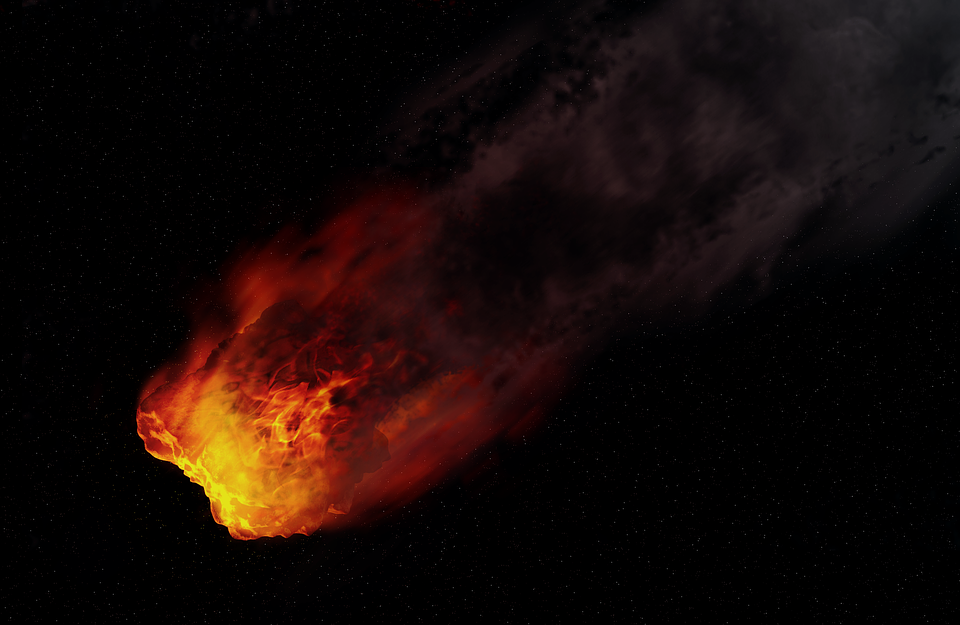Asteroids have been seen coming and passing by Earth for a while. Now, it seems that NASA’s asteroid trackers have spotted a giant space rock that is hurtling towards the direction of the planet.
The asteroid trackers of the space agency caught sight of a giant rock that measures about a kilometer in diameter were spotted hurtling towards the planet’s orbit at a rapid speed of 35,500 miles per hour. Formally known as 2002 PZ39, the asteroid is classified as a Near-Earth Object or NEO as well as potentially hazardous due to its size. An asteroid as big as the PZ39 can be able to cause destruction on a global scale if it makes an entrance within the Earth, past its atmosphere.
NASA estimates that PZ39 will be approaching the Earth’s orbit on the 15th of February. It will make its approach at a speed of 15.19 kilometers per second. It is not the first time NASA has spotted PZ39, however. It made its first appearance on the agency’s radars back in 1995. They have also said that they will be continuing to keep tabs on this asteroid to further study the celestial objects. If a lot of warnings are given ahead of time, then existing technology may be utilized to deflect the asteroid in case it enters the Earth’s atmosphere.
Fortunately, PZ39 will only pass by Earth, and not collide with it. The closest it will get when it makes its approach in February would be 0.03860 astronomical units, or in human terms, 3.8 million miles away. It is still very far by human standards, but it is close enough for the agency to see.
Meanwhile, another asteroid is reported to make an approach to Earth. NASA’s asteroid trackers have also caught sight of a rock, formally known as 2019 AV1, hurtling through space and towards the Earth’s orbit at a speed of nearly 27,000 miles per hour. Also classified as a Near-Earth Object or NEO, or an Apollo-type NEO, because it crosses the orbits of a similar asteroid known as 1862 Apollo.
Luckily, the closest AV1 will be towards Earth is at 0.01858 astronomical units or 1.7 million miles. This is closer than many NEOs, but still far enough from the rest of us.



 Lost in space: MethaneSat failed just as NZ was to take over mission control – here’s what we need to know now
Lost in space: MethaneSat failed just as NZ was to take over mission control – here’s what we need to know now  Ancient Mars may have had a carbon cycle − a new study suggests the red planet may have once been warmer, wetter and more favorable for life
Ancient Mars may have had a carbon cycle − a new study suggests the red planet may have once been warmer, wetter and more favorable for life  Is space worth the cost? Accounting experts say its value can’t be found in spreadsheets
Is space worth the cost? Accounting experts say its value can’t be found in spreadsheets  SpaceX’s Starship Completes 11th Test Flight, Paving Way for Moon and Mars Missions
SpaceX’s Starship Completes 11th Test Flight, Paving Way for Moon and Mars Missions  Jared Isaacman Confirmed as NASA Administrator, Becomes 15th Leader of U.S. Space Agency
Jared Isaacman Confirmed as NASA Administrator, Becomes 15th Leader of U.S. Space Agency  Eli Lilly’s Inluriyo Gains FDA Approval for Advanced Breast Cancer Treatment
Eli Lilly’s Inluriyo Gains FDA Approval for Advanced Breast Cancer Treatment  Tabletop particle accelerator could transform medicine and materials science
Tabletop particle accelerator could transform medicine and materials science  Trump and Merck KGaA Partner to Slash IVF Drug Costs and Expand Fertility Coverage
Trump and Merck KGaA Partner to Slash IVF Drug Costs and Expand Fertility Coverage  Trump Signs Executive Order to Boost AI Research in Childhood Cancer
Trump Signs Executive Order to Boost AI Research in Childhood Cancer  Astronomers have discovered another puzzling interstellar object − this third one is big, bright and fast
Astronomers have discovered another puzzling interstellar object − this third one is big, bright and fast  SpaceX Starship Test Flight Reaches New Heights but Ends in Setback
SpaceX Starship Test Flight Reaches New Heights but Ends in Setback  FDA Adds Fatal Risk Warning to J&J and Legend Biotech’s Carvykti Cancer Therapy
FDA Adds Fatal Risk Warning to J&J and Legend Biotech’s Carvykti Cancer Therapy  Cogent Biosciences Soars 120% on Breakthrough Phase 3 Results for Bezuclastinib in GIST Treatment
Cogent Biosciences Soars 120% on Breakthrough Phase 3 Results for Bezuclastinib in GIST Treatment  NASA Astronauts Wilmore and Williams Recover After Boeing Starliner Delay
NASA Astronauts Wilmore and Williams Recover After Boeing Starliner Delay 































